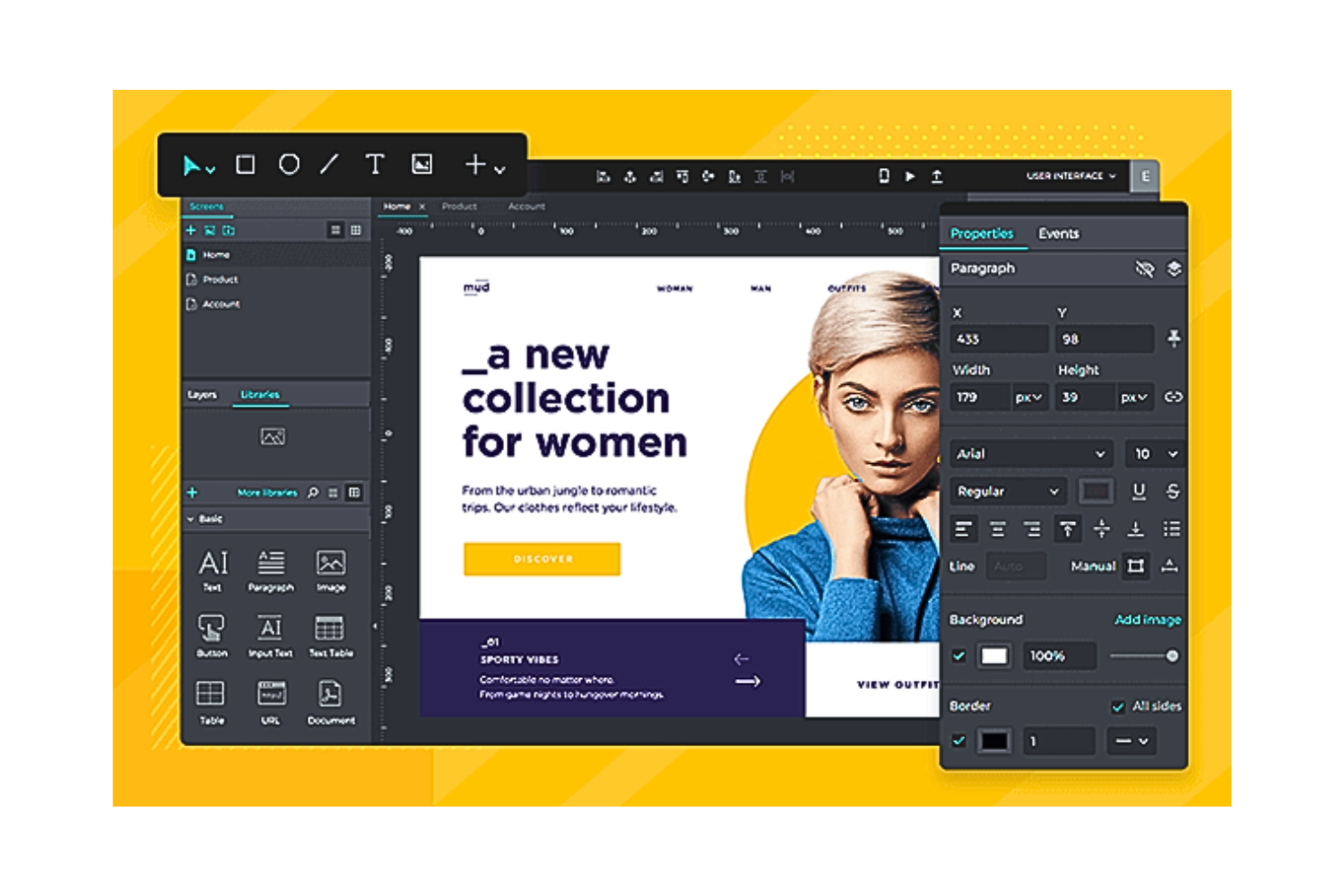Unraveling the Complexities of Responsive Website Design and Its Influence On Ease Of Access and Capability Across Different Gadgets
Receptive web style (RWD) has arised as a fundamental technique in creating digital experiences that are both practical and obtainable across varied tools. By incorporating methods such as liquid grids and CSS media queries, RWD not only boosts user interaction however likewise addresses essential access concerns for people with impairments.
Recognizing Responsive Website Design
Receptive internet design personifies the concept of adaptability, making certain that sites supply an optimal viewing experience across a range of tools and display sizes. This strategy employs flexible grids, layouts, and photos, allowing the material to dynamically change based on the individual's gadget. The surge of mobile net use has actually made responsive design not just a pattern, however a need for modern internet development.
At its core, responsive internet style highlights fluidity and scalability. By using CSS media inquiries, designers can customize designs to varying display dimensions, guaranteeing that message continues to be legible and images are presented suitably. This strategy accommodates the diverse array of devices, from smartphones to large desktop screens, assisting in smooth navigation and interaction.
In addition, receptive website design enhances customer involvement by lowering the requirement for too much zooming or straight scrolling, which can diminish the individual experience. By prioritizing ease of access, organizations can get to a broader audience, ensuring that all customers, no matter of tool, can access material successfully. Eventually, comprehending receptive internet style is vital for developing web sites that are not only visually enticing yet straightforward and also useful across varied systems.

Trick Concepts of RWD
Emphasizing flexibility and user-centric layout, the key principles of responsive web layout (RWD) focus on developing a seamless experience no matter the gadget being utilized. One essential concept is fluid grids, which make use of family member devices like percents as opposed to repaired measurements. This method makes certain that layout elements adapt proportionally to varying display dimensions, keeping visual coherence.
Another important concept is adaptable pictures and media, which resize within their consisting of aspects. web design Johannesburg. By utilizing CSS techniques such as max-width, developers can stop pictures from exceeding their parent containers, ensuring that visuals continue to be sharp and suitably scaled across devices
In addition, media queries play a pivotal duty in RWD, enabling developers to use details CSS styles based on the features of the device, such as orientation, height, and size. This ability enables customized experiences that enhance use and interaction.
Additionally, a mobile-first approach is significantly favored, where layouts prioritize smaller sized screens and gradually boost for larger tools. This concept not only optimizes efficiency yet additionally deals with the expanding occurrence of mobile surfing. Collectively, these principles develop the foundation of responsive website design, promoting a easy to use and adaptable digital setting.

Effect On Ease Of Access
The combination of responsive website design plays an important duty in improving availability for all individuals. By adopting a flexible format that adjusts to varying display dimensions and positionings, responsive layout makes certain that web content stays quickly accessible and clear despite the device utilized. This adaptability is particularly substantial for people with disabilities, that may depend on assistive modern technologies that work better when content is structured responsively.
Moreover, receptive website design reduces the possibility of issues such as horizontal scrolling, which can impede customers with electric motor handicaps or visual disabilities. By giving a regular customer experience across tools, developers can prioritize ease of access attributes such as keyboard navigation and screen viewers compatibility, enabling for a much more inclusive electronic setting.
Furthermore, search engines significantly favor responsive layouts, which can boost exposure for customers looking for available content. Therefore, services and organizations are urged to adopt these practices not just to conform with accessibility standards however additionally to reach a broader audience. Inevitably, receptive website design is important in advertising equitable accessibility to information and services across diverse individual teams, therefore cultivating an inclusive digital landscape.
Performance Across Tools

Additionally, the efficiency of web applications can vary considerably across gadgets. Smart phone frequently have actually restricted handling power and slower internet links, which can affect packing times and total customer experience. It is essential for designers to enhance pictures, manuscripts, and various other sources to guarantee that performance stays reliable and regular, despite the device being utilized.
Furthermore, the design and framework of web content have to adjust fluidly to various display dimensions to keep use. This flexibility not only enhances user engagement however likewise minimizes frustration, ultimately leading to greater retention prices. In recap, focusing on performance across devices is necessary for producing a reliable and comprehensive web existence that satisfies the varied requirements of users.
Best Practices for Implementation
Implementing receptive internet style successfully needs a tactical approach that focuses on individual experience and availability. To accomplish this, begin by taking on a mobile-first style approach, which emphasizes creating an optimum experience for smaller displays prior to scaling as much as larger tools. This technique makes certain that necessary material is prioritized which functions are seamlessly incorporated.
Next, utilize liquid grids and flexible designs. Employ relative systems, such as percentages, instead than repaired units like pixels - web design Johannesburg. This flexibility allows material to resize dynamically based on the display's measurements, boosting use across various tools
In addition, include media queries to use specific CSS policies based on the characteristics of the tool, such as width, elevation, and resolution. This targeted approach permits customized experiences that accommodate the special capabilities of each gadget.
In addition, prioritize accessibility by guaranteeing that all interactive components are conveniently accessible via touch or key-board. Apply semantic HTML to enhance screen viewers compatibility and maintain high contrast ratios for readability.
Conclusion
To conclude, receptive web style acts as a fundamental element in producing practical and easily accessible electronic experiences throughout diverse tools. By incorporating liquid grids, adaptable pictures, and CSS media inquiries, responsive layout not just boosts customer engagement yet also advertises fair access to info for all individuals, consisting of those with disabilities. Sticking to finest practices in implementation makes certain that websites remain adaptable, ultimately fostering a more comprehensive digital atmosphere that satisfies the varying needs of users.
Receptive internet style (RWD) has actually emerged as a fundamental method in creating electronic experiences that are both accessible and functional throughout varied devices.Receptive internet design symbolizes the principle of adaptability, ensuring that websites provide an optimum watching experience across Discover More a variety of tools and screen sizes.Stressing flexibility and user-centric design, the vital principles of responsive internet style (RWD) revolve around developing a smooth experience no click to read more matter of the gadget being utilized.Functionality throughout devices is an essential consideration in internet style, as users involve with content via a range of systems, including desktop computers, mobile phones, and tablet computers.In conclusion, receptive web style offers as a fundamental component in producing available and useful digital experiences throughout varied gadgets.